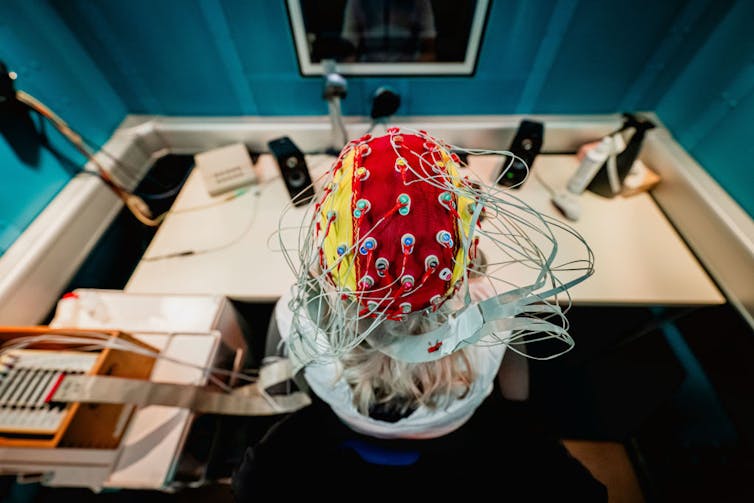Neuroergonomicsis the study of human behavior while carrying out real-world activities, including in the workplace.
It involves recording a persons brain activity in different situations or while completing certain tasks to optimize cognitive performance.
For example, neuroergonomics could monitor employees as theylearn new materialto determine when they have mastered it.

© David Crockett/Moment via Getty Images
Until now, research in neuroergonomics could only be conducted in highly controlled clinical laboratory environments using invasive procedures.
But engineering advances now make this work possible in real-world parameters with noninvasive, wearable devices.
But this advance doesnt come without risk.

Electroencephalography, or EEG, is one method of collecting brain activity.
It does this by passing infrared light through the skull to monitor blood flow.
Neuroergonomics also studies how brain stimulation could be used to improve brain activity.
High-stakes ethical questions
The use of neurotechnology in the workplace has global implications andhigh stakes.

How to protect the brain activity data of workers remains unclear.
Advocates say neurotechnology can encourage economic growth and the betterment of society.
Those against neurotechnology caution that it could fuel inequity and undermine democracy, among other possible unknown consequences.
Ushering in a new era of individualized brain monitoring and enhancement poses manyethical questions.

For example, how should an individuals brain activity data be protected?
Additional privacy regulations may be needed.
Additionally, do employers have the right to require workers to comply with the use of neuroergonomic devices?

TheGenetic Information Nondiscrimination Act of 2008prevents discrimination against workers based on their genetic data.
News from the future, delivered to your present.
Will It Ever Be Possible to Share Dreams?

“There is no theoretical barrier to the possibility of accessing the contents of someones dream.”
Can Dogs Think About the Past?



















